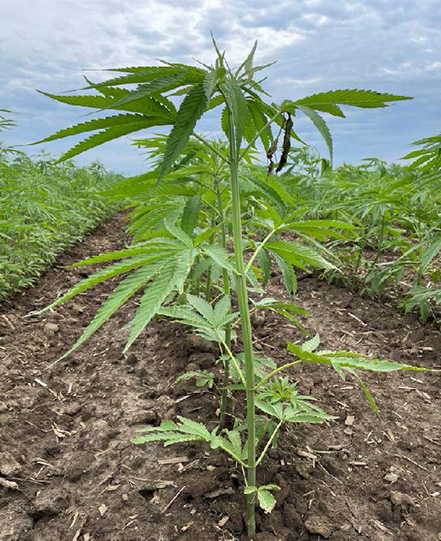
Industrial hemp (Cannabis sativa L.) is a fast-growing, versatile plant that belongs to the family Cannabaceae. Unlike marijuana, which is also a Cannabis species, industrial hemp contains less than 0.3% THC (tetrahydrocannabinol) and is grown for a wide range of agricultural and industrial uses—such as fiber, grain, and cannabinoids like CBD.
Growth habit
Hemp is an annual, dicotyledonous, herbaceous plant that completes its life cycle in one growing season, typically within 60 to 120 days after planting, depending on variety and environmental conditions (Amaducci et al., 2015).
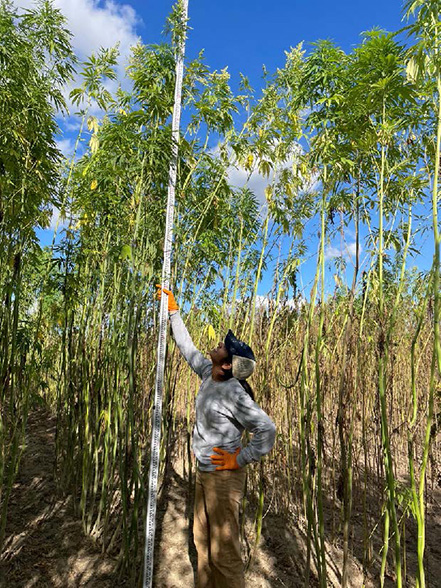
- Growth form: Upright with a tall central stalk
- Height: Ranges from 4 to 15 feet, depending on variety and end use
- Taproot: Deep, fibrous root system that enhances drought resistance and soil health
Leaf morphology
Hemp leaves are palmately compound (Fig. 3). Multiple narrow leaflets (usually 5–9) radiate from a central point-like fingers from a palm (Small, 2015).
- Shape: Serrated, lanceolate leaflets
- Arrangement: Opposite on lower nodes and alternate on upper nodes
- Color: Light green as compared to marihuana
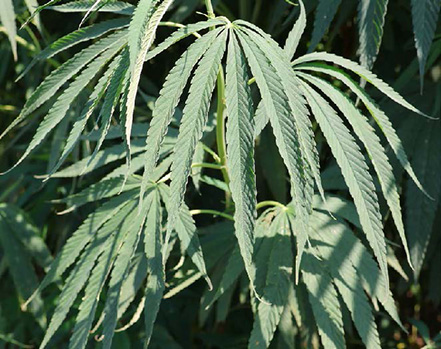
Stem and fiber characteristics
Hemp stems are rich in bast fibers, which are used in textiles, ropes, and bio-composites.
Stem anatomy:
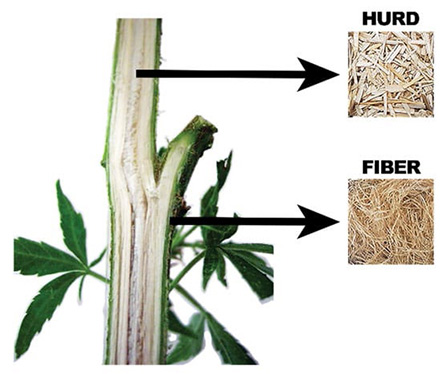
- Outer layer has a bark covering containing bast fibers
- Core of the stem contains hurd, which is woody inner portion. This is often used in animal bedding, construction, or biofuels
- Diameter: Varies based on varieties and planting density
- Composition: 60-70% cellulose, 15-20% hemi-cellulose, 2-4% lignin, 2-4% pectin, 1% fat & wax
Flowering and reproduction
Hemp is typically dioecious, meaning that male and female flowers are found on separate plants (Hall et al., 2012). Monoecious varieties, where both flower types are on one plant, also exist (Clarke & Merlin, 2013).
Male plants:
- Produce pollen
- Die after releasing pollen (Edwards & Whittington, 1992; Strzelczyk et al., 2022)
- Have fewer leaves and thinner stems
Female plants:
- Produce seeds or cannabinoids (in floral bracts)
- Larger, bushier, with more leaf mass
- Pollination: Wind-pollinated (Sandler & Gibson, 2019)
- Flowering is photoperiod-sensitive and typically begins when day length shortens to 12 hours
- Plants vary in their maturity and may not flower in some locations.
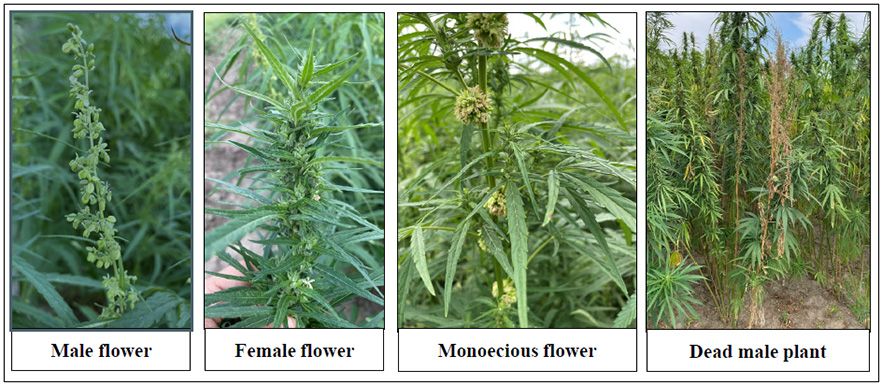
Seed and fruit
Fruit is a small, dry, single-seeded achene, often referred to as a “hemp seed.”
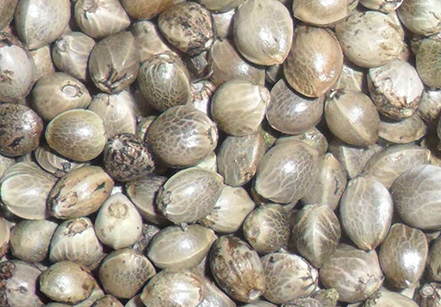
Shape and size:
- Oval to round and measures 0.12–0.2 inches in diameter
- Color ranges from gray to brown with marbling
- Composition: Oil (29 to 34%), Protein (25-30%), Unsaturated fatty acids (54-60% linoleic acid, 15-20% linolenic acid, & 11-13% oleic acid)
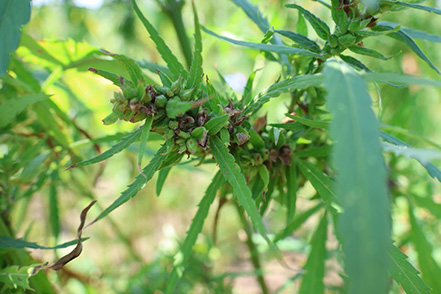
Inflorescence and cannabinoid production
In cannabinoid-producing cultivars (e.g., for CBD), female flowers are the primary site of cannabinoid accumulation (Small, 2015).
- Inflorescence is a dense clusters of flowers at upper branches
- Trichomes are glandular hairs that produce and store cannabinoids and terpenes
References
- Amaducci, S., Scordia, D., Liu, F. H., Zhang, Q., Guo, H., Testa, G., & Cosentino, S. L. (2015). Key cultivation techniques for hemp in Europe and China. Industrial Crops and Products, 68, 2–16.
- Clarke, R. C., & Merlin, M. D. (2013). Cannabis: Evolution and Ethnobotany. In Ethnobiology Letters (Vol. 6, Issue 1). University of California Press, Berkeley.
- Edwards, K. J., & Whittington, G. (1992). Male and female plant selection in the cultivation of hemp, and variations in fossil cannabis pollen representation. The Holocene, 2(1), 85–87.
- Hall, J., Bhattarai, S. P., & Midmore, D. J. (2012). Review of flowering control in industrial hemp. Journal of Natural Fibers, 9(1), 23–26.
- Kaur, G., & Kander, R. (2023). The Sustainability of Industrial Hemp: A Literature Review of Its Economic, Environmental, and Social Sustainability. Sustainability, 15(8), 6457.
- Sandler, L. N., & Gibson, K. A. (2019). A call for weed research in industrial hemp (Cannabis sativa L). Weed Research, 59(4), 255–259.
- Small, E. (2015). Evolution and classification of Cannabis sativa (Marijuana, Hemp) in Relation to Human Utilization. Botanical Review, 81(3), 189–294.
- Strzelczyk, M., Lochynska, M., & Chudy, M. (2022). Systematics and botanical characteristics of industrial hemp (Cannabis Sativa L.) Journal of Natural Fibers, 19(13), 1–23.